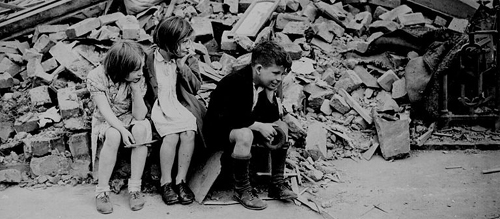Bringing an information text to life: Pets in the Blitz
Primary History article

Please note: this article pre-dates the 2014 National Curriculum and some content may be outdated.
Editorial comment: The in-service course had focused on how to read information texts in a stimulating, engaging and intellectually rewarding way, and how to take Bruner's concept of transforming information from one mode to another so as to deepen understanding, i.e. transforming between the visual (iconic), the written (symbolic) and the dramatic and physical (enactive). Ruth carried out a small-scale action research project to try out these ideas.
Thrillingly, she showed in an elegant, economical and stimulating way how pupils could move between modes to assimilate the structure and detail of an information text. The pupils drew pictures of the scenes in an information text. They then used these scenes as the basis for writing their own version of the information text without reference to it. A brilliant idea.
Introduction
We were studying the Blitz within the context of Britain during the Second World War, 1939-45. The mixed Year 3-4 class was used to copying from books as its predominant way of dealing with information text. The pupils had done some work on note-taking. The challenge I faced was how to present them with a difficult and challenging information text that they could then represent in their own words. The approach I took was for them to create visual mental representations of the scenes in the written text. The aim was for the pupils then to use these scenes as the basis for presenting the ideas and information in the text in their own words. The annotated lesson plan is based upon what I taught, with some thoughts included of how the teaching might be improved next time...
This resource is FREE for Primary HA Members.
Non HA Members can get instant access for £2.75

